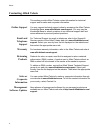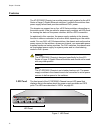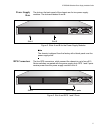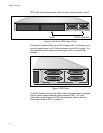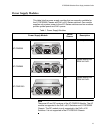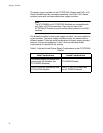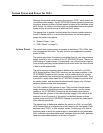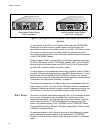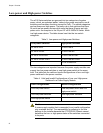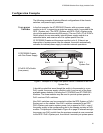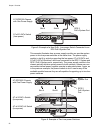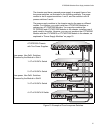
AT-RPS3000 Redundant Power Supply Installation Guide
21
System Power and Power for PoE+
Although the product name contains the acronym “RPS,” which stands for
“redundant power supply,” the AT-RPS3000 Chassis actually functions as
the active, primary source of system power for some of the switches in the
x610 Series. For others it functions both as a redundant source of system
power and as an active source of additional PoE+ power.
The easiest way to explain how and when the chassis supplies power to
the x610 Series switch is to divide the discussion into the two types of
power the switch may require:
“System Power,” next
“PoE+ Power” on page 22
System Power The switch uses system power to operate its switching, CPU, LEDs, fans,
and management functions. The only function not supported by system
power is PoE+.
The switch may obtain its system power either from its own internal power
supply module or from a module in the AT-RPS3000 Chassis. There is no
load-sharing of system power. Consequently, one of the sources is going
to be actively providing system power to the switch while the other source
is held in a redundant state.
The active source of system power is different for non-PoE+ and PoE+
x610 Series switches. Non-PoE+ switches use the power modules in the
AT-RPS3000 Chassis as their primary, active power source for system
power, and place their internal power modules in a redundant state. Thus,
a non-PoE+ switch relies upon the AT-RPS3000 Chassis to provide all of
its system power, and activates its internal power supply only if it stops
receiving system power from the chassis.
For PoE+ switches, the opposite is true. They use their internal power
supply modules as the active source for system power, and the power
module in the AT-RPS3000 Chassis as the redundant power source.
Should there be a failure of the internal power supply in the switch or an
interrupt in the AC power to it, the switch immediately begins to draw
system power from the AT-RPS3000 Chassis to prevent any interruption
to its network operations.
The easiest way to determine whether the switch is a PoE+ or non-PoE+
x610 Series switch is to examine its model name on the front panel. PoE+
switches have “POE+” in their product names. Another way is to look at
the back panel to see if the power supply is removable or non-removable.
PoE+ switches have removable power modules while non-PoE+ switches
have non-removable modules, as shown in Figure 6.




